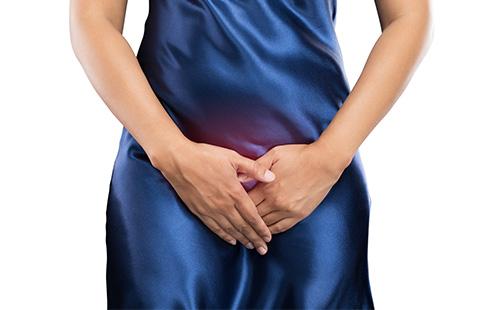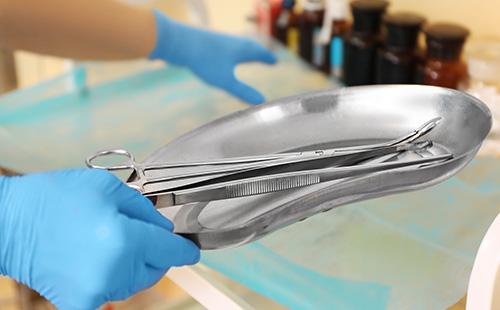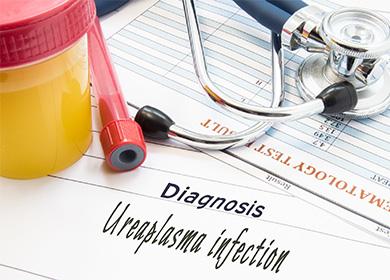The content of the article
- 1 What is this bacterium
- 2 How is it going
- 3 What research will help you figure it out?
- 4 Are these microorganisms dangerous
- 5 Is it necessary to treat and how
- 6 Why can ureaplasma appear in a woman again
- 7 How to protect yourself
- 8 Reviews: "For fidelity, it is better to consult with different doctors, listen to who says what"
There are several varieties of ureaplasmas, each of which has a different value for the reproductive health of women. Symptoms of ureaplasmosis in women are most often very scarce, in most cases they are detected during preventive examinations.
What is this bacterium
Ureplasma infection in women, what is it? The human body is not sterile. And even such a thing as “sterile blood” is the lot of the last century, which is often used by doctors by habit. New technologies make it possible to determine what previously could only be suspected. On the one hand, this helps in the diagnosis and development of treatment for many diseases, on the other hand, it increases the amount of doubt and confusion. This happened with ureaplasma. Over the past ten years, opinions about her have radically changed at least three times.
Pathogen or norm
According to the latest recommendations, ureaplasma should be attributed to mycoplasmas. There are about 20 varieties of these pathogens. The following types of mycoplasmas can cause diseases in humans:
- Mycoplasma pneumonia;
- Mycoplasma genitalium;
- Ureaplasma species (includes Ureaplasma urealyticum, Ureaplasma parvum).
Examination of sexually active women reveals this pathogen in two out of three women. Moreover, there are far from always complaints.
How is transmitted
As such, the pathogen does not have an incubation period. Ureaplasmas are found in 10% of girls and adults who do not live sexually in scrapings from the urethra. This once again is evidence that this bacterium can be considered a variant of the normal flora of a woman. It also has the following transmission paths:
- sexual - traditional sex, as well as oral, anal and other types of intimate relationships;
- vertical - from mother to fetus through the placenta, as well as the ascending variant through the cervical canal and during natural birth;
- with organs and blood - with an organ transplant and even with a blood transfusion, microbial transfer is possible.
The following methods do not transmit ureaplasma infection:
- when visiting a shared toilet;
- in the pool, sea and other bodies of water;
- through bedding, as well as towels;
- through common dishes.
How is it going
Ureaplasmas can be detected in perfectly healthy women, for example, during a routine examination before planning a pregnancy.With a combination of factors, microbes can become the causes of the following diseases in women.
- Urethritis and cystitis. Inflammation of the urethra and bladder is accompanied by burning, itching in the area of the external opening of the urethra, as well as painful and frequent urination. Chronic cystitis and urethritis are often associated precisely with ureaplasma infection. Most often, ureaplasma urealiticum is found in women.
- Vaginosis and vaginitis. These microbes can cause dysbiosis and bacvinosis. At the same time, women complain of an unpleasant "fishy" smell, an abundant secretion of liquid mucus. In addition, relapses may occur. thrush or nonspecific colpitis (with yellow, greenish, non-abundant secretions).
- Cervicitis. Inflammation of the surface of the cervix and its channel, especially in the background erosion or ectopia. Ureaplasmas together with the herpes simplex virus (HSV) of the first and second types, human papillomavirus (HPV), I can provoke chlamydia cervical dysplasia and malignant degeneration of cells.
- Endometritis. It is observed when ureaplasmas are activated in the uterine cavity after childbirth or abortion, as well as after diagnostic procedures, such as curettage or hysteroscopy.
- Adnexitis. Ureaplasmas along with other conditional pathogens against the background of immunodeficiency can cause signs of inflammation of the appendages. However, they do not give such serious consequences as, for example, chlamydia (infertility due to adhesions).
What research will help you figure it out?
Many methods can be used to detect ureaplasmas, however, not all of them have clinical significance. In order to determine the further tactics of conducting a woman with suspected sexually transmitted infections (STIs), it is necessary to undergo the following examination.
- Smear from the posterior vaginal fornix. This is the main marker of whether there is active inflammation at the moment or not. Ureaplasmas are not determined by it, but elevated white blood cells in a smear in women is not the norm, but a “signal” for starting treatment, including ureaplasma.
- Cervical smear. The principle is the same as with vaginal smears.
- PCR material from the vagina. In order for PCR to be more informative, it is better to perform real-time PCR, as well as follow all recommendations before the examination (do not urinate for two hours; do not have sex during the day; do not wash on the eve of the study). PCR-real-time will only detect active ureaplasmas, and not the remains of the cell membrane of already treated "dead" bacteria.
- Bacteriological culture. This analysis of ureaplasma allows not only to identify pathogens in women, but also to determine their number. It is believed that an excess of 1 * 104 colony forming units is a pathological condition, however, it is necessary to approach more differentially.
Are these microorganisms dangerous
Ureaplasmosis in women can occur for years, without causing any harm to health. That is why they belong to the category of conditional pathogens. However, you can often find that ureaplasmas in association with other bacteria become the causes of the following conditions:
- inflammation of the pelvic organs;
- pathology of the cervix, including dysplasia;
- recurrent thrush;
- non-specific inflammation in the vagina.
The greatest danger is ureaplasma during pregnancy. Therefore, at this time, most specialists are inclined towards its treatment. The following consequences are possible:
- threat of interruption at short notice;
- water leakage in the second and third trimesters;
- intrauterine infection of the fetus;
- premature birth;
- congenital pneumonia in a child and other complications of an inflammatory nature.

Is it necessary to treat and how
The question of whether to treat ureaplasma in women is controversial. Recent recommendations are summarized in the following indications for initiating active therapy:
- pregnancy planning or presence;
- prospective change of partner;
- complaints from a woman, for example, pain or leucorrhoea;
- the presence of cervical disease;
- detection of other STIs.
Preparations
Treatment regimens for ureaplasma in women include the following groups.
- Antibiotics. It is optimal to prescribe them taking into account sensitive microbes according to the results of bacteriological culture. Often assignedDoxycycline"(Aka" Unidox "," Vibramycin ") 100 mg twice a day for 10 days,"Azithromycin"(" Azikar "," Sumamed ") 1 g twice with an interval of a week or according to another scheme, as well as its analogues (" Josamycin "," Clarithromycin ").
- Topical candles. In addition, it is useful for women to lay suppositories with an antibacterial effect. For example, "Polygynax», «Terzhinan», «Clotrimazole"," Trichopol "," Flagil. "
- Immunomodulators. Given the fact that ureaplasmas are activated during the period of immunodeficiency, it is advisable to use drugs to strengthen it. Most often these are medications based on interferon, for example, "Ruferon", "Geneferon».
At the doctor’s discretion, according to indications, enzyme preparations (for example, Wobenzym), hepatoprotectors (for example, Harsil), and antiviral treatment for combined infections can be prescribed. A woman takes drugs on her own at home, all of them are in the form of tablets or suppositories, there is no need to give injections. During treatment, there is no need to follow special diets, except for refusing alcohol.

Why can ureaplasma appear in a woman again
The reviews of women confirm the situation when, after prolonged treatment with ureaplasma, the bacteria are detected again after some time. The causes of ureaplasmosis in women can be as follows:
- re-infection - if the sexual partner has not been treated or has not followed all the recommendations;
- activation of "their" ureaplasmas - when prescribing drugs to which bacteria are insensitive, as well as if a woman did not follow the scheme;
- false positive result - in case of non-observance of the time interval after treatment;
- "Own flora - if a woman’s ureaplasma is the norm for her, then it is very difficult to “withdraw” her.
How to protect yourself
Prevention of ureaplasmosis includes the following:
- use of condoms during sexual intercourse;
- regular full examination, especially in the presence of complaints.
Ureaplasma special is not an aggressive pathogen, however, it can cause inflammatory changes in the genitals. The signs of ureaplasma in a woman are nonspecific, so the infection is detected in most cases by accident. Given that the bacterium can affect the course of pregnancy, it is recommended to take a course of antibiotics during gestation. An individual treatment regimen for ureaplasmosis in a woman is selected by a doctor and may include more than three drugs. Many women look on the Internet a photo of how the disease manifests itself, but it’s not worth it, go quickly to the doctor.
Reviews: "For fidelity, it is better to consult with different doctors, listen to who says what"
Today I took a control analysis after treatment with ureaplasma urealitikum And !!! ATTENTION!!! I HAVE NOT DETECTED IT TO ME to any degree !!!! So many tears were shed in 2.5 years as I discovered it ..She treated her 4 times herself with different schemes !!! But everything was inconclusive ... she remained to a degree greater than 10 * 4 ... and it all started anew ... replaced a bunch of gynecologists and urologists. (some said that this is not a disease at all and it does not need to be treated, others vice versa) .. I killed my body with pills, recovered, then started to be treated again ... and did not see the end to this torment ... in early May I found out that I had an ST .. after her was treated again, but already in the hospital .. and now I understand what it is, the 5th treatment in a row helped !!!! In general, I endured so much that I would not wish anyone. When I went to take the analysis, I was sure that she would stay again. Now I understand that ureaplasma is over and I hope FOREVER ... I still can’t believe it !!! periodically I look at this happy leaf with the result and a smile from ear to ear ... And now with a clear conscience from the next cycle, my husband and I can begin to plan again !!!!
Lelchik https://www.babyblog.ru/community/post/conception/1746838
And I also had it, they drank a couple of antibiotics every 10 days and everything is OK! I didn’t even know that some had been treating her for so long. But I also read that this is something like a “constant infection” in the body, if it exceeds the permissible norm, then it must be treated - otherwise it will flow into a chronic form or into serious illness.
Anastasia https://www.babyblog.ru/user/lenta/nastochka85
And three years ago I treated ureaplasma together with gardnerella and also a whole list (vilprafen (antibiotic), ornidazole (antibiotic), mycosyst (in principle also an antibiotic), dalacin (antibiotic), ginesol (antibiotic), lactogin (lactobacillus for the vagina), polyoxidonium (something also for flora) in as a result, I killed everything that was possible.at least it seemed to me-5 antibiotics are just tough !!!!! I was sick even with the word food, I could eat only the first spoon, then only nausea. (but ureaplasma gave up and after a month there was nothing in the analyzes it wasn’t found !!! I just don’t know what it was ((now I have parv the mind and I don’t even want to heal, poison with 5 antibiotics and whether they will help, although I think so, because all together they kill this muck !!! and yet the best cure for it is a condom !! !!! even with my husband. I’ll cure him again and never for anything and never !!!!!!!!!! only after joint analyzes when planning children !!!!!!!!!! that because of this ureaplasma my ovaries are constantly inflamed and the cyst is already a separate organ in the body. who does not bother to live, I'm glad for you))
Ira http://www.woman.ru/health/woman-health/thread/3919086/
As soon as we started planning, we passed all the tests with my husband! The result - it is clean, I have 10 * 3-10 * 4 ureaplasma. After sowing, treatment was prescribed. Repeated analyzes - the same credits !!! At the same time, note - my husband is clean! I went to another doctor, again treatment, I take tests - the titers are the same))) The result - through my friends I found a doctor who did not need to pump money out and came to a consultation with all my pieces of paper. Poe smiled and said - firstly, such titers is an acceptable norm, and secondly - after two courses of treatment, one could guess that such an environment, apparently, is the norm for me, it is not for nothing that it is not treated with those medicines that when sowing are active)) well, and thirdly - you milk, here you are milked So try to treat if you want (I understand you, I myself was the same), but IMHO ... maybe you have the same case ...
Victoria, https://www.baby.ru/u/usr115650/
The doctor told me that nothing needs to be treated, and even an analysis should not be taken for ureaplasma. I have had ureaplasma parvum for about 10 years ... Previously, another doctor constantly poisoned me with courses of the strongest antibiotics, and all the same, this byak got out after some time. Sense to undermine the body with drugs? There is none, this meaning. For fidelity, it is better to consult with different doctors, listen to who says what.
Olenka Dmitrieva, https://deti.mail.ru/id1005231071/

